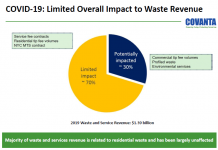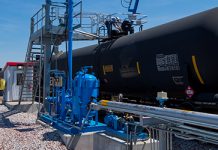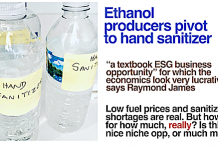by Debra Fiakas CFA
![California[1].gif](http://www.altenergystocks.com/wp-content/uploads/2017/08/California_1_.gif) In the last two posts Pacific Ethanol (PEIX: Nasdaq) and Aemetis, Inc. (AMTX: OTC/BB) got all the attention. Both companies have crafted their facilities to accept lower-cost sorghum as an alternative feedstock, opening up the door to lower carbon intensity measures for their ethanol output. There are other ethanol producers in the state, which we believe are still relying on corn as feedstock. Which companies will remain in operation in California is not yet clear. Standards sets by California Air Resources Board (CARB) for the carbon intensity of alternative fuels favors local producers and renewable diesel or biofuel over corn-based ethanol.
In the last two posts Pacific Ethanol (PEIX: Nasdaq) and Aemetis, Inc. (AMTX: OTC/BB) got all the attention. Both companies have crafted their facilities to accept lower-cost sorghum as an alternative feedstock, opening up the door to lower carbon intensity measures for their ethanol output. There are other ethanol producers in the state, which we believe are still relying on corn as feedstock. Which companies will remain in operation in California is not yet clear. Standards sets by California Air Resources Board (CARB) for the carbon intensity of alternative fuels favors local producers and renewable diesel or biofuel over corn-based ethanol.
Calgren Renewable Fuels has operated a 55 million gallon ethanol plant in Pixley, California. For feedstock Calgren is bringing in corn from the Midwest by train. If you have read by two previous posts, the words Midwest and corn should cause some concern for how the company’s product will fair under CARB’s carbon intensity standard. However, Calgren claims its carbon footprint is small than most and its production of ethanol per bushel of corn is higher than average. Calgren has been fiddling around with cow manure to make ethanol, receiving a $4.5 million grant from the California Energy Commission to construct a digester to make biomethane.
Coshochten, Californai is home to the ethanol plant of AltraBiofuels. It has a capacity of 60 million gallons and has been in production since 2008. Like Calgren, AltraBiofuels is sourcing its corn feedstock principally from the Midwest.
California Ethanol Power stands apart from the rest of the pack. CE&P plans to source its feed stock from sugar cane produced in the Imperial Valley. Once its facility is operation in late 2015, CE&P plans send its ethanol by truck to customers in southern California and Arizona.
Parallel Products offers yet another twist on ethanol production. Parallel is using waste consumer products to produce ethanol. Fermentation of sugar laden liquids and the distillation of alcohol-based wastes yield 5 million gallons of ethanol per year. Headquartered in Kentucky, the company operates five facilities around the country, including one in Ontario, California. Parallel says this facility receives over 3.5 million cases of dated or damaged beverage products annually. The carbon intensity of Parallel’s products is not clear. Its business model is highly unique.
There is no immediate investment opportunity in any of these companies. AltraBiofuels showcases its venture capital and private equity investors, but the rest are a bit circumspect on where the got start-up capital. What might be more important for investors to watch in this group is potential merger and acquisition activity. With the exception of Calgren, which seems to be using conventional fermentation and distillation processes, each appears to have developed unique technologies and processes. What is more these processes seem to have been proven economically viable as well as scientifically sound. In my view, that makes each of these Golden State operators a plum target for others who need to improve competitive position with lower-carbon content alternative fuel production.
Debra Fiakas is the Managing Director of Crystal Equity Research, an alternative research resource on small capitalization companies in selected industries.
Neither the author of the Small Cap Strategist web log, Crystal Equity Research nor its affiliates have a beneficial interest in the companies mentioned herein.








